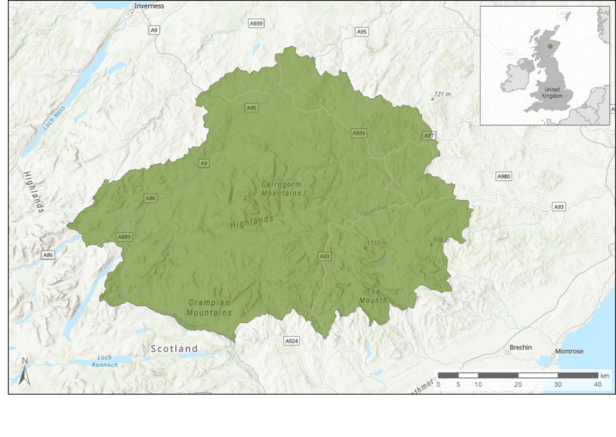
C26 Cairngorms Forests ¶
A rich heritage of native timber production ¶


General information on the Cairngorms National Park.
| Total forest area | 62 300 ha based on 2015 survey, but currently expanding by approximately 1000 ha annually |
| Main management types | Clear felling/restocking, Low Impact Silvicultural Systems, Continuous Cover Forestry, nature reserve |
| Total volume | 12 126 000 m³ in 2015 |
| Annual growth | No data |
| Annual cutting rate | No data |
| Deadwood | Unknown, but some woodlands are being managed to produce more for biodiversity objectives |
| Ownership | A complex mix of mainly private land, with some owned by the state and conservation NGOs |
| Climate | Varies with altitude and distance from the Atlantic, but average 6.5 °C mean annual temperature, 900 mm mean annual precipitation at lower altitudes. |
| Geology | Mainly Dalradian sedimentary rock and post-tectonic granitoid intrusions. |
| Soils | Podzols are the most representative soil group in the national park (around 50 %), and consist of iron and humus-iron podzols at lower elevations. Peaty podzols and peaty gleyed podzols occur further upslope (and typically have an iron pan). Other groups include montane soils, peats, rankers and gleys. Brown earth soils cover only 4 % of the park. |
| Protected area | National Park (IUCN category V). Includes 54,399 ha of National Nature Reserve, covering significant areas of Scots pine and birch forest, as well as mountain willow scrub. |
| Natura2000 area | In the national park there is a total of 106 300 ha of SAC. Designated woodland habitat types include: Caledonian Forest; Bog Woodland; Western Acidic Oak Woodland; Alder Woodland on Floodplains; Mountain Willow Scrub; and Juniper scrub; There is also 201 300 ha of SPA, with woodland-related qualifying species of capercaillie, Scottish crossbill, osprey and golden eagle. |